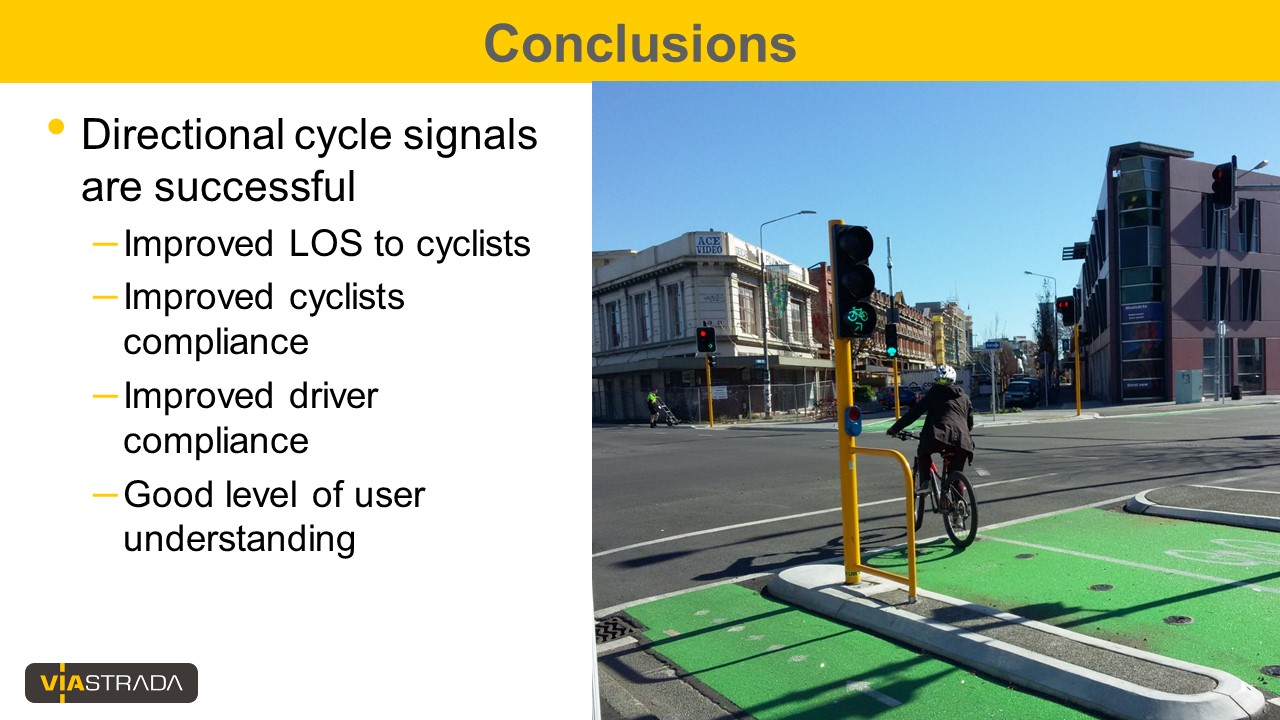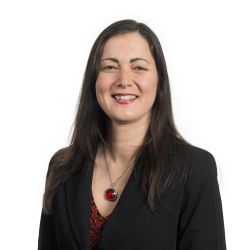Directional cycle signals (Transportation Conference 2019)
Where presented / published:
Transportation Group NZ Conference 2019, Wellington
It’s time to give cycle signals a face-lift!
Equipped with signal aspects in the shapes of arrows and discs, traffic engineers have control over each individual motor vehicle movement at an intersection, giving flexibility to the intersection phasing and thus achieving maximum efficiency and safety. In contrast, provision for cycling is limited to a standard cycle signal, a blanket cover for all cycle movements from the same intersection approach. This makes it impossible to operate two cycle movements from the same approach independently and generally limits cycle phases to operating only when the most-restricted cycle movement can. People on bikes who are frustrated with being unnecessarily held back may choose to run a red cycle signal; this could negatively influence other cyclists (including those less capable of judging the situation for themselves), result in conflict with pedestrians or motor vehicles, and irritate drivers.
To address this problem, Christchurch City Council and Auckland Transport commissioned ViaStrada to conduct an official traffic control device trial of directional traffic signals for cyclists. The new signals have been installed at four intersections. Assessments of user behaviour (compliance and conflicts), user understanding, and user satisfaction have been undertaken at three of the intersections and will soon be carried out at the fourth.
The results are satisfying. Compliance of both people on bikes and motorists was shown to increase with the introduction of the directional cycle signals. The success rate for surveyed users interpreting the various scenarios shown to them was pleasingly high, showing that the devices used are intuitive to users. Survey respondents were generally in favour of the new signals.
Our industry has been tasked with creating an efficient, modern, safe, and environmentally sustainable transport system; directional cycle signals will contribute to this by improving the cycling level of service and therefore increasing the cycling mode share. Megan was the lead author of a paper for the 2019 Transportation Conference and Axel presented the topic – they were awarded best research paper at the conference.
Update – this project won the best research paper award, TG Conference 2019!






